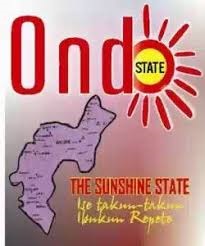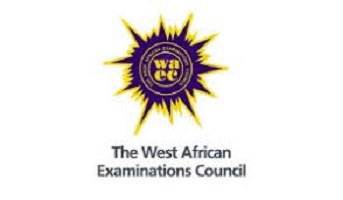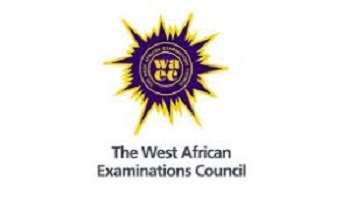Table of Contents
WAEC Chemistry practical Alternative 2020 ANSWERS
The Waec chemistry practical 2020 paper for SSCE will now be written TODAY Tuesday, 18th August, 2020 as seen in the updated time table 2020
We made this post to show apparatus, Waec chemistry practical specimen, graphs and calculations that was used in the Chemistry Practical Examination questions and syllabus.
Here, we will be providing you with the Waec Chemistry practical 2020 past questions and materials that will be used for Examination preparation. Read answers below.
WAEC Chemistry Practical Specimen 2020:
The following apparatus and materials will be required by each candidate for waec chemistry practical 2020;
(a) one burette of 50cm³ capacity.
(b) one pipette, either 20cm³ or 25cm³.
(c) the usual apparatus for titration.
(d) reagents as follows;
(i) dilute sodium hydroxide solution.
(ii) dilute hydrochloric acid.
(iii) dilute trioxonitrate(v) acid
(iv) silver trioxonitrate(v) solution.
(v) barium chloride solution.
(vi) aqueous ammonia.
(vii) lime water.
(viii) red and blue litmus paper.
(ix) dilute tetraoxosulphate(vi) acid.
- Each candidate should be supplied with the following where n is the candidate’s serial number.
(a) 150cm³ of sodium trioxosulphur sulphate(vi) solution in a corked flask or bottle, labelled “An”. These should all be the same containing 6.0g of Na2S2O3 per dm³ of solution. - 150cm³ of iodine in potassium iodide solution in a corked flask or bottle labelled “Bn”. These should all be the same containing 2.5g of I2 and 1.67g of KI per dm³ of solution.
- One spatulafull of a uniform mixture of NaCl and CuCO3 in a specimen bottle labelled “Cn”. The components of the mixture should be in the ratio 1:2 by mas.
CHECK: WAEC TIME TABLE
WAEC Chemistry Practical 2020 Questions & Answers:
1. A is 0.100 mol dm-3 solution of an acid. B is a solution KOH containing 2.8 g per 500 cm3.
(a) Put A into the burette and titrate it against 25.0 cm3 portions B using methyl orange as indicator. Repeat the titration to obtain consistent titres. Tabulate your readings and calculate the average volume of A used.
(b) From your results and the information provided above, calculate the:
(i) number of moles of acid in the average titre;
(ii) number of moles of KOH in the volume of B pipetted;
(iii) mole ratio of acid to base in the reaction
[H = 1.00, O = 16.0, K = 39.0]
ANS: (a) titration answer soon.
(b) (i) number of moles of acid = 0.100 x VA
1000
= X mole(s) [3sig. Fig to score]
1000cm3 contains 0.100 mole(s)
VA will contain 0.100 x VA
1000
= X moles [3 Sig. Fig. to score]
(ii) Number of moles of KOH in B
500cm3 of B contains 2.8g of KOH
1000cm3 of B will contain 2.8 x 1000 = 5.6 KOH
500
Molar mass of KOH = 39 + 16 + 1 or 56 gmol-1
Conc of B = 5.6 = 0.100 mol dm-3
56
(iii) Mole ratio of acid to base = X: Y to nearest whole number ratio.
2. C is a mixture of two salts. Carry out the following exercises on C. Record your observations and identify any gas(es) evolved. State the conclusion drawn from the result of each test.
(a) Put all of C into a boiling tube and add about 5cm3 of distilled water. Stir thoroughly and filter. Keep both the residue and the filtrate.
(b) To about 2 cm3 of the filtrate, add few drops of Pb(NO3)2(aq)‑Boil the mixture and then allow to cool.
(c) (i) Put the residue in a test tube and add dilute HNO3. Shake the mixture and divide the solution into two portions.
(ii) To the first portion from (c)(i), add NaOH(aq) in drops and then in excess.
(iii) To the second portion from (c)(i), add aqueous ammonia in drops and thein in excess.
ANS:
| TEST | OBSERVATION | INFERENCE |
| a) C+water, mixture stirred and filtered |
Partly dissolves/ soluble Colourless filtrate White residue (do not accept ppt /solid) |
C contains soluble and insoluble salts |
| b) Filtrate + Pb (NO3)2(aq). Boiled then cooled | White precipitate formed Precipitate dissolves Precipitate re-appears |
Cl-, SO42- or CO32. Cl- present Cl- confirmed |
| c) (i) Residue + dil HNO3 | Effervescence /bubbles /gas evolved colourless, odourless gas. Gas turns lime water milky. | CO2 evolved from CO32- |
| (ii) Solution from (c)(i) + NaOH(aq) in drops then in excess | White gelatinous ppt formed. Precipitate dissolves | Zn2+ or A13+
Zn2+ or A13+ |
| (iii) Solution from (c)(i) + HN3(aq) in drops then in excess | White gelatinous. Precipitate forms. Precipitate dissolves | Zn2+ or A13+
Zn2+ confirmed |
3. (a) Explain briefly the observations in each of the following processes:
(i) when carbon(IV) oxide is bubbled through lime water, it turns milky but the milkiness disappears when the gas is bubbled for a long time;
(ii) a precipitate of calcium hydroxide is insoluble in excess sodium hydroxide solution whereas that of lead (II) hydroxide is soluble.
(b) (i) What is a primary standard solution?
(ii) Calculate the mass of sodium trioxocarbonate(IV) required to prepare 250 cm3 of 0.15 moldm-3 solution.
[Na = 23.0; O = 16.0; C = 12.0]
(c) Name one gas that can be collected by:
(i) upward displacement of air;
(ii) downward displacement of air.
ANS: (a) (i): Insoluble CaCO3 formation is responsible for the milkness produce when CO2 is bubbled through lime water while the disappearance of milkness is due to the formation of soluble Ca(HCO3)2.
Lime water turns milky with CO2 because CaCO3/ CaCO3(s) is formed. Milkiness disappear when excess CO2 reacts with CaCO3 in water medium forming the soluble Ca(HCO3)2/ Ca(HCO3)2 (aq).
(ii) Calcium hydroxide is not amphoteric. Does not react with an alkali NaOH whereas lead (II) hydroxide is amphoteric so reacts with excess NaOH.
(b) (i) Primary standard solution is one whose concentration is known and can be used to standardize another solution.
(ii) M (Na2CO3) = 106 gmol-1
m(Na2CO3) = C x M x V
= 0. 15 x 106 x 0. 25
= 3. 98 g
(c) (i) Carbon(IV) oxide, sulphur (IV) oxide, hydrogen chloride, oxygen, nitrogen (IV) oxide, chlorine, hydrogen sulphide.
(ii) Ammonia, oxygen, hydrogen, methane.
WE GIVE YOU FREE WAEC RUNZ



Please I need to know the picture of that